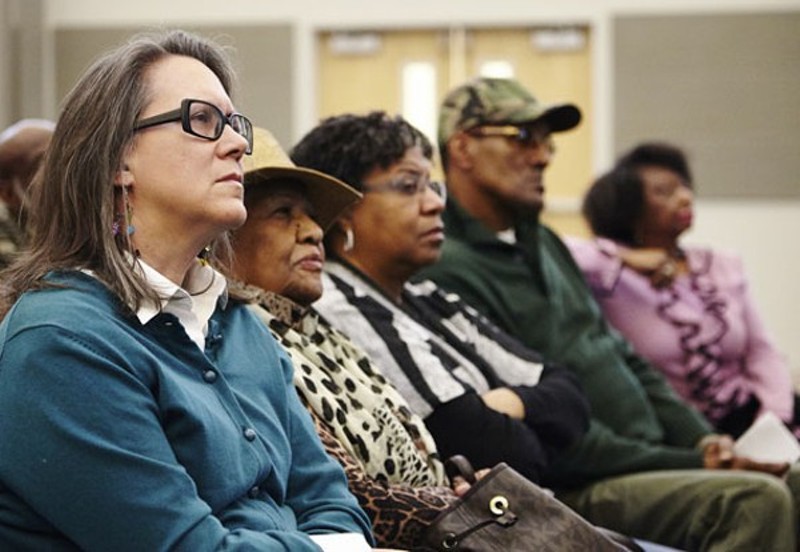The Ferguson Commission wasn't built just to churn out a report.
Assembled by an executive order from Governor Jay Nixon, the commission's sixteen members have spent the past ten months compiling data, holding public hearings and listening to experts. Among their goals? Catalog the racial inequalities in the St. Louis region — which affect everything from income to life-expectancy to education — that place black residents in Jim Crow conditions and propose meaningful reforms.
It's that last part where the Commission's work has attracted cynicism and, in some circles, outright derision. And while today marks the release-date for the Ferguson Commission's landmark report, its authors haven't succumbed to delusion. "There is a limit to the influence over decision-making that we as a Commission can have," the report states in its introduction. "No matter how sound our calls to action, they are calls — the Commission does not have the power to enact them."
But that doesn't mean the Commission pulled its punches. The 198-page report features the 47 "signature" actions culled from roughly 200 recommendations published in draft-form earlier this summer. Among the report's policy suggestions are:
- Creating a public, statewide database that tracks statistics on use of force incidents and police killings.
- Increasing annual officer training by 24 hours, with a focus on "tactical, wellness, and anti-bias training."
- Institute statewide policies for dealing with protests and demonstrations that "prioritize the preservation of human life."
- Designating the Attorney General to prosecute police "use of force" cases that result in death, officer-involved shootings resulting in injury or death, and in-custody deaths.
- Consolidating municipal courts and police departments.
And this isn't the end of the Ferguson Commission. The group won't be officially disbanded until January. Its co-chairs, Starsky Wilson and Rich McClure, have told Riverfront Times that they will do everything they can to ensure the report makes an impact on the region, which could take years, even decades.
"This seems aspirational, but I think the Ferguson Commission is part riot commission, part truth commission, part community think tank," Wilson said during an interview earlier this year. "The great hope is that all this work is going to benefit the children of our community more than it will benefit anyone else. We need to be clear that the success or failure of the region in this moment will be written over the course of the next twenty years."
What remains to be seen is how the state's political players respond to the recommendations, especially those dealing with the police reforms. Without movement in the legislature, many of the Ferguson Commission's findings will remain trapped in its pages.
For a deeper dive into the controversies and hopes surrounding the Ferguson Commission, make sure to check out RFT's April cover story: Rev. Starsky Wilson and the Fight to Make the Ferguson Commission Matter.
Follow Danny Wicentowski on Twitter at @D_Towski. E-mail the author at [email protected]






